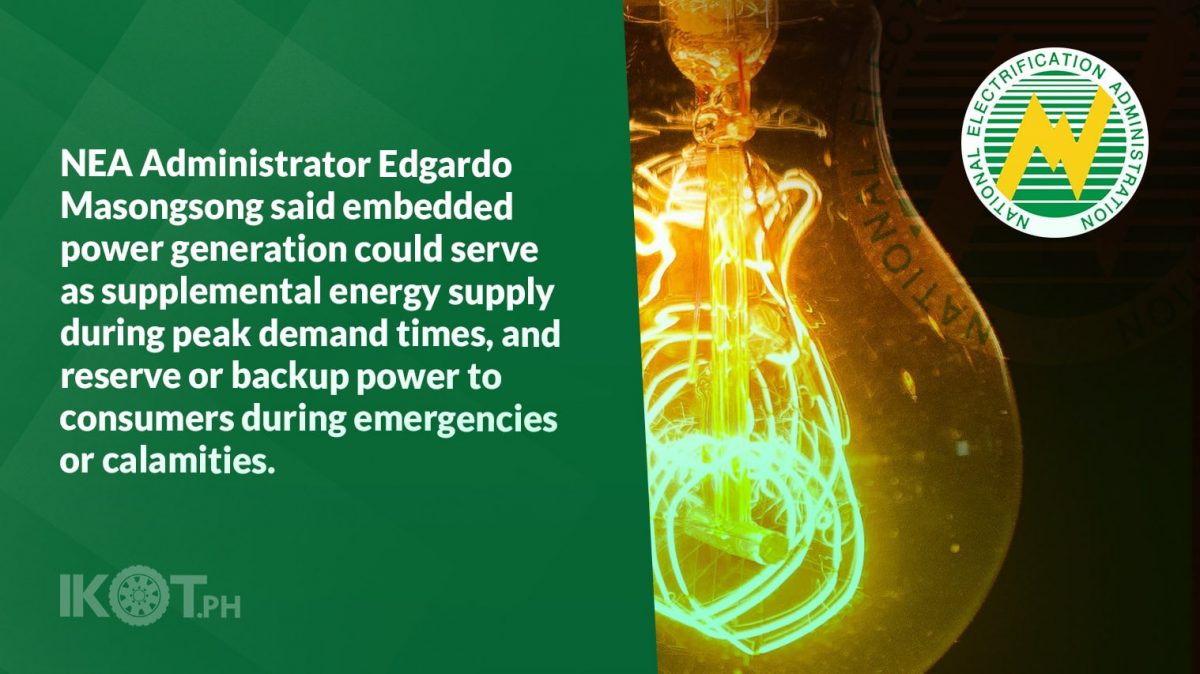State-run National Electrification Administration (NEA) is encouraging the electric cooperatives (ECs) to invest in embedded power generation projects to mitigate future electricity supply shortages in their respective coverage areas.
NEA Administrator Edgardo Masongsong said embedded power generation could serve as supplemental energy supply during peak demand times, and reserve or backup power to consumers during emergencies or calamities.
Masongsong also urged the ECs to explore the use of renewable energy sources, like solar, wind, hydro, and biomass, to help meet growing energy demand in their respective franchise areas.
“Electric cooperatives should be aggressive in as far as developing, installing, and operating their own embedded power generation, not only to meet peak electricity demand but to provide standby or emergency power during calamities,” Masongsong said.
The NEA chief directed the agency’s Total Electrification and Renewable Energy Development Department (TEREDD), headed by manager Ernesto Silvano Jr., to assist the ECs in developing their own embedded generation.
Masongsong also urged the ECs to explore the use of renewable energy sources, like solar, wind, hydro, and biomass, to help meet growing energy demand in their respective franchise areas.
Currently, a feasibility study is ongoing on the establishment of a hybrid mini-grid system using renewable energy in six unserved off-grid areas under the franchise of
These ECs are Quezon II Electric Cooperative, Inc. (QUEZELCO II), Zamboanga del Norte Electric Cooperative, Inc. (ZANECO), and South Cotabato II Electric Cooperative, Inc. (SOCOTECO II).
Moreover, the feasibility studies for the hybridization of the existing diesel power plants with renewable energy and battery in 10 islands in Northern and Western Samar have also been completed. The project is in collaboration with the National Economic and Development Authority (NEDA).


